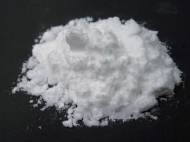Eco-friendly extraction of strivite fertilizer from sewage
 Phosphorus is a vital element not only for plants but also for all living organisms. In recent times, however, farmers have been faced with a growing shortage of this essential mineral, and the price of phosphate-based fertilizers has been steadily increasing. Researchers from Fraunhofer Institute have found a way to convert wastewater from sewage treatment plants into a fertilizer for food production.
Phosphorus is a vital element not only for plants but also for all living organisms. In recent times, however, farmers have been faced with a growing shortage of this essential mineral, and the price of phosphate-based fertilizers has been steadily increasing. Researchers from Fraunhofer Institute have found a way to convert wastewater from sewage treatment plants into a fertilizer for food production.
Led by Jennifer Bilbao, the researchers at the Fraunhofer Institute for Interfacial Engineering and Biotechnology (Fraunhofer IGB) in Stuttgart have devised a process which uses wastewater from sewage treatment plants and the fermentation residues from biogas plants which rapidly extracts the nutrients and enables them to be directly used as a fertilizer.
The main feature of the patented process, which is currently being tested in a mobile pilot plant, is an electrochemical process that uses struvite (magnesium-ammonium phosphate) – a soft mineral which forms inside kidneys and a common problem in sewage and waste water treatment – to create fertilizers. Although the use of struvite as an agricultural fertilizer was in fact first described in 1857, the new process is more eco-friendly, since it is chemical-free and it enables the recovered salts to be converted directly into organic food for crop plants.
The process occurs by electrolysis of the solution containing nitrogen and phosphorus. Struvite is precipitated from the process water in the form of tiny crystals that can be used directly as fertilizer, without any further processing. The innovative aspect of this method is that, unlike conventional processes, it does not require the addition of synthetic salts or bases to complete the process.
In order to test the viability of the process, the researchers built a 2-meter-high (6.5-foot-high) electrolytic cell that forms the centerpiece of the test installation and through which the wastewater is directed contains a sacrificial magnesium anode and a metallic cathode. Another name for sacrificial anodes is galvanic anode, and its role is to protect buried or submerged metal structures from corrosion.
The electrolytic process splits the water molecules into negatively charged hydroxyl ions at the cathode, and the magnesium ions migrate through the water and react with the phosphate and ammonium molecules in the solution to form struvite by oxidation at anode. Since the magnesium ions in the process water are highly reactive, this method requires very little energy.
For all types of wastewater tested so far, the necessary power never exceeded the value of 70 watt-hours per cubic meter. Aside using far less electricity than conventional methods, long-duration tests performed by Fraunhofer IGB researchers demonstrated that the concentration of phosphorus in the pilot plant’s reactor was reduced by 99.7 percent to less than 2 milligrams per liter.
The researchers plan to spend the next few months testing the mobile pilot plant at a variety of wastewater treatment plants before starting to commercialize the process in collaboration with industrial partners early next year. They also claim that the process could be used to treat wastewaters from the food-industry and from the production of biogas from agricultural wastes, as long as the water being processed is rich in ammonium and phosphates.









Leave your response!